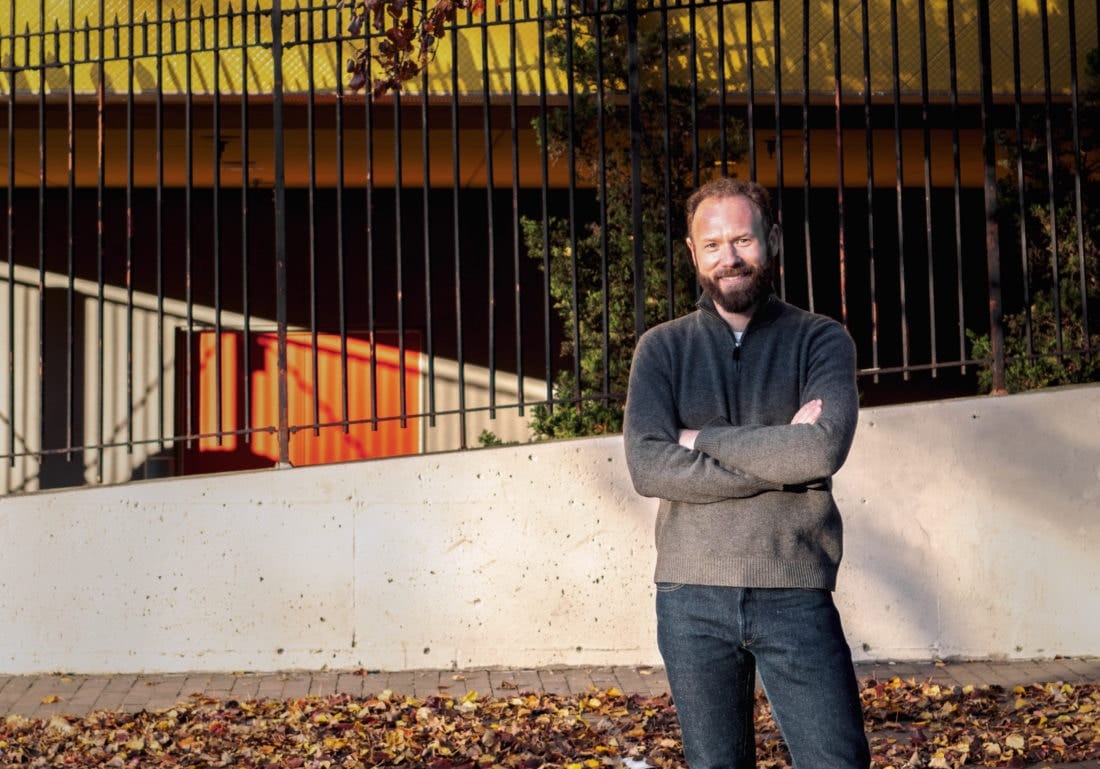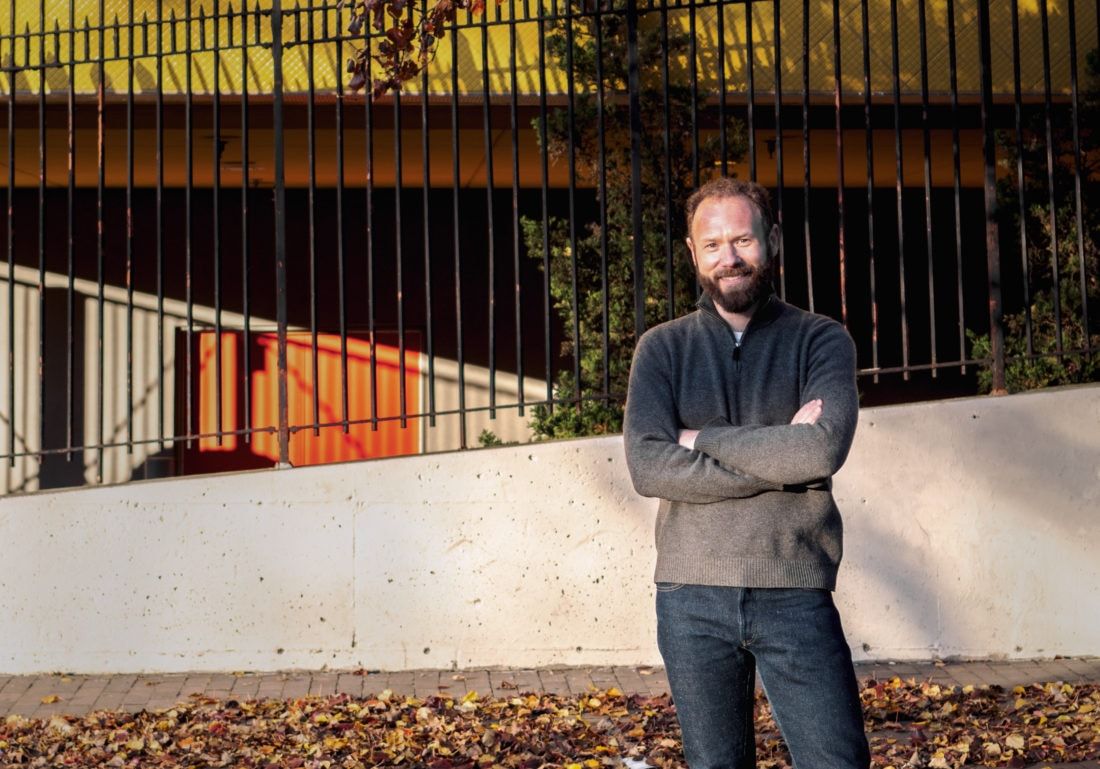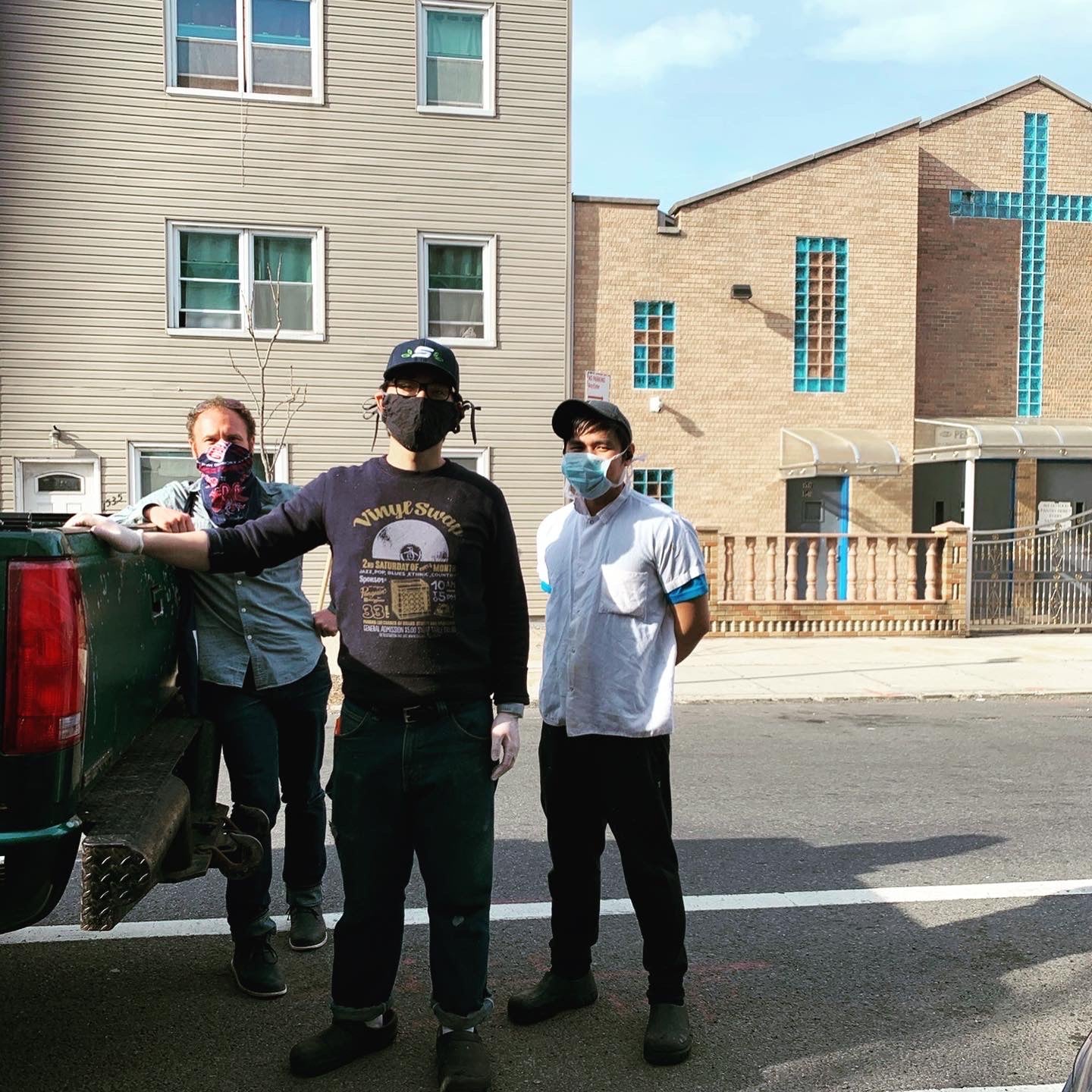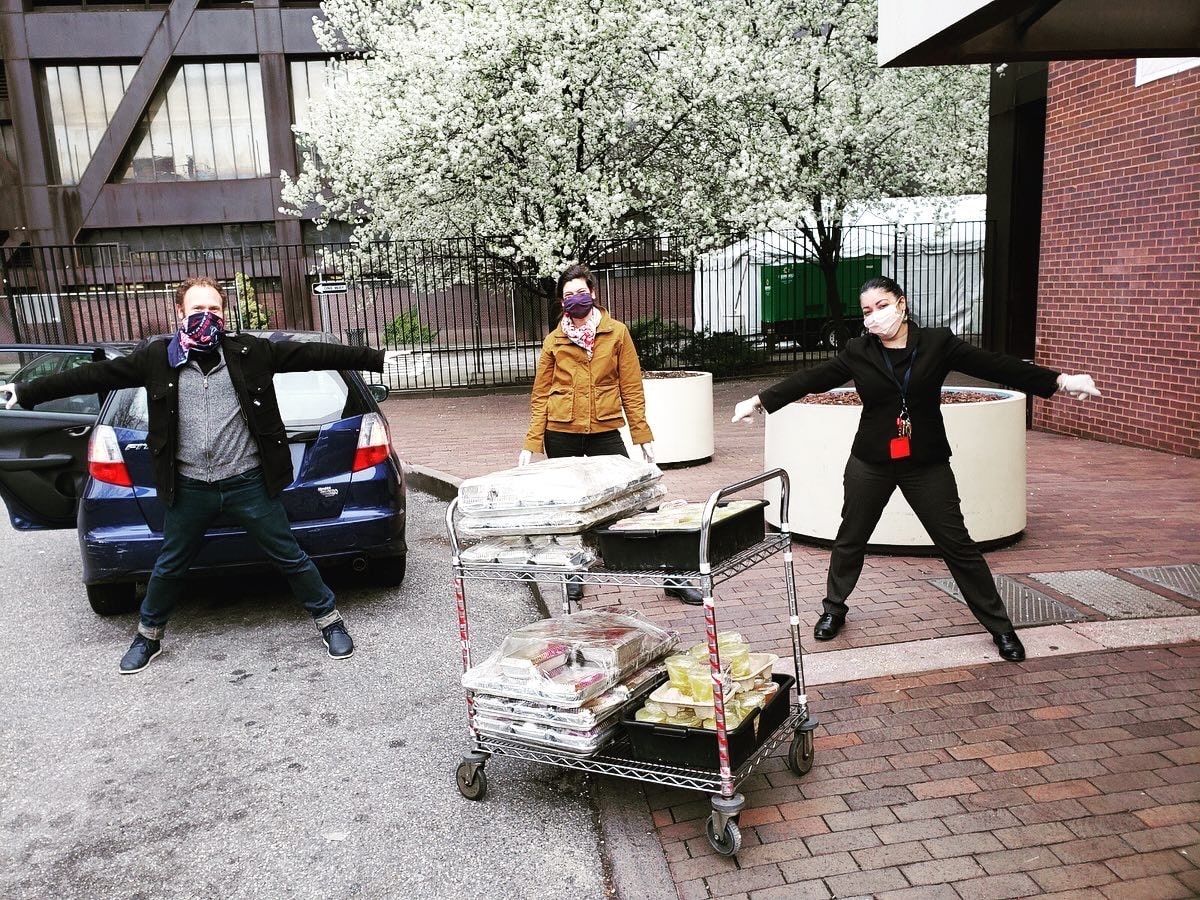Health, Housing, Justice – Justin Cohen Offers A Progressive Vision For Bed-Stuy And Crown Heights


This June 23 is the Democratic primary, which in most NYC districts is the actual election as residents vote overwhelmingly for the individual on the Democratic ticket in the general election. Justin Cohen is running against Stefani Zinerman to represent Bed-Stuy and Northern Crown Heights in State Assembly. Assembly District 56 has, since 2017, been represented by Assemblywoman Tremaine Wright, who is currently running for NY Senate seat to represent District 25.
We spoke to Cohen about running for office, how the pandemic has changed his platform, and what he thinks needs to happen for a successful recovery. The conversation has been lightly edited for clarity.
Bklyner: Tell us, what’s the campaigning like these days?
Justin Cohen: You know, I think of campaigning as an attempt to build as many new relationships as possible and have as many conversations as possible. Talk to as many neighbors and hear their concerns and listen to the community’s needs. And it’s really hard right now. All of the typical avenues are basically closed. Can’t knock doors, you can’t hold events. So we’re doing as much as we can on digital platforms, which we know are likely to exclude older folks, folks with less access to technological resources, folks who don’t have high speed Internet.
Finding ways to connect with neighbors who don’t have access to those channels is our day to day challenge, making sure that their voices are heard, too. Every day we’re trying and learning new things about how to reach more people. What is pretty clear, though, is that there is a very clear need in the community for jobs, for health care that is free and accessible, and all of the issues around housing that were true before the crisis have been exacerbated, especially when it comes to rent, when it comes to affordability. So so despite the fact we were not able to connect with people in some of the traditional ways, the messages we’re hearing are very clear and very consistent.
B: Your campaign was involved with mutual help networks organizing support for neighbors early.
JC: When social distancing started, we put the campaign on hold. I had a small team. We just embedded ourselves in different networks of mutual aid – with one or two that have been organizations that have been up and running for a long time, and then with a couple of the groups that are newer and have popped up in response to the crisis. And some of that has meant doing intake calls and talking to neighbors who are calling for food or immediate mental health assistance or have questions about testing and health care. In other cases, it’s doing proactive outreach to folks we know are living in compromised circumstances, whether that’s because they live in public housing where we know that they’re unlikely to have as much access to resources or they’re older.

And in doing those calls, you just hear a consistent set of themes right there. First of all, there’s deep food insecurity in this community – Bed-Stuy, Crown Heights, East East New York, Flatbush, Brownsville. The further you get from Downtown Brooklyn and Manhattan, the more likely you are to live without proximity to food. And that’s very real. And especially at a moment like this where supply chains are disrupted, the communities that live in other parts of the borough are getting served.
I remember having a conversation with a woman in Brownsville back in March who said that there were no cleaning supplies within a mile of her house. In the meantime, I talked to the friend in Park Slope who said that they were getting deliveries of Lysol wipes to his pharmacy every week. Right. So you just see these disparities play out within the borough. We talk about inequality and it’s a matter of welfare.
I think that’s the thing that has been so striking, is just how the basics have been so compromised. In the meantime, for folks who have money, for folks of privilege and resources, there’s no shortage of delivery services and, you know, ways to get food and supplies to your door. But those things require bank accounts, credit cards, extra money to pay delivery.
If you’re are feeding a family and you are unemployed and you do not have family wealth, you can’t afford those extra 10 dollars for delivery. That’s a lot of money. So I think that’s one thing, as those disparities have been so front and center.

B: Has any of what you have seen over the last two months changed anything on your platform?
JC: I had always supported the New York Health Act, which is the New York version of Single-payer, it was always on there, but not necessarily at the top of the list.
All of this has just solidified my commitment to doing something at the state level around insurance, because the fragmentation of the testing and treatment infrastructure is so harmful to historically marginalized communities, particularly black and brown communities here in Brooklyn, that the idea that we would be waiting for the federal government to fix health care seems increasingly ludicrous to me.
So much all we’re seeing is that the disparities and preventative care and primary care manifest as higher vulnerability to two deaths and handling of your illness. So I think that’s one place where this has caused us to double down on health care as an issue.
And then when it comes to housing, I signed onto the Housing for All coalition. I’ve been pretty vocal about the fact that we live in a city with a quarter million luxury apartments, vacant luxury apartments, depending on how you count it. And, you know, 60,000 homeless New Yorkers – and that that seems like a gigantic equity issue and one that signals that we care more about real estate than we do about our neighbors’ safety.
Housing has been a theme of every conversation I’ve had in the last 10 years in the city. And now, now you have the housing crisis affecting more Middle-Class folks. And I think that has been interesting to watch. You see people who had jobs in creative and gig economy who think of themselves as relatively safe and secure, not being able to pay rent. And the idea that a two to four-month economic shock would basically render it impossible for millions of New Yorkers to afford rent. That, I think, is a wake-up call around the way real estate works in the city.
I think there are a lot of elected officials in this state who are comfortable with the status quo on real estate. And that’s that is untenable. We have a city where we are using real estate as more or less just sort of a financial instrument, maybe not as bad as London, but it’s close. And so, you know, the idea that we would think of real estate first as a real estate instrument and second has a place to house people is immoral. And we need to remedy that and we need to work with it. And in this particular moment, I do think that if we cancel rent, which we should do for the duration of the economic downturn, that there should be some kind of concomitant relief for folks who own multi-family homes.
I think if you’re a real estate investor and you’ve invested, and you are making tens of millions, hundreds of millions of dollars on real estate transactions and fees and rents, you know, and this crisis affects you – that’s what risk and reward looks like. There’s a difference between that and the homeowner with a two-family home who rents out the top floor. I think we need to have a reckoning around that.
B: What do you think is going to happen when August comes and people cannot pay the rent and the eviction moratorium’s over?
JC: If the eviction moratorium is over, I think that you’re going to see landlords proceed with evictions at a pretty extraordinary rate, and that’s going to take an enormous toll, that’s gonna be a human rights crisis in the city. I think there needs to be legislative or executive action around it, because knowing what I know about the real estate industry in the city, I will not be surprised that the second eviction courts open that we will see a shocking number of proceedings.
The governor and legislature have to act on this. They have to protect people or it’ll be a human rights crisis. You’ll see a surge of homelessness. You’ll see a surge of people who are unable to afford their basic necessities. You’ll see rent strikes. You know, there are I know there are rent strikes right now in progress. It’s hard to predict what will happen, but I don’t think for a second that left unfettered that the real estate industry in the city would do the right thing without legislative or executive action.
B: Let’s talk about what happens next. If you’re elected, hopefully, the recovery will have started by then. What do you think are the main elements we should be concerned about/focus on?
JC: I see five broad categories for recovery, rooted in what I’m hearing from leaders in the community and neighbors. And those are institutions and businesses, health care, livability (and within livability I include housing and economic relief for working people), education, and public safety.
I think those are the ones that need the most attention, and I don’t think they’re all doable at the state level alone. To me recovery means that you have the state directing investments to the places where the highest needs are, to hopefully, create some constraints that municipalities do the right thing with those resources and then lobbying the federal government to continue to do the kind of stimulus that we know we’re going to need.
If the economic crisis of 2008 is any indication, state and municipal budgets are going to be affected for two to three years down the road at the very least. And those deficits are going to be much higher in 2021 and 2022 than they do this year. I think it’s important for states, particularly states like New York, to be continuously lobbying for stimulus. And I think that will look very different in a first Biden administration than it would look in a second Trump administration.
We have to do something about rent and mortgages like period. If that hasn’t happened by August, it’s not like we can forget about it, because then people are going to be in debt. People are going to be in debt to landlords. People are going to be in debt to banks. And it’s untenable.
I think the Assembly and Senate are going to have to take that issue up and are going to have to move aggressively on it, because we can’t we can’t get out of this crisis by saddling people with a life, lifelong debt, basically.
On the issues of businesses and cultural institutions, we predicted that the vast majority of the PPP loans and small business loans at the federal level would go to “small businesses” that are not that small, and that the average small business, whether it’s a brick and mortar storefront or an LLC or a creative economy business that operates out of a brownstone, did not see that money and that was disproportionately true for black and brown owned businesses. So so when it comes to a community like Crown Heights, the small businesses that have been here forever if we don’t do something to make sure that there’s access to funds – we need to do something to make sure that this crisis doesn’t further erode the culture of our neighborhoods by causing the closure of businesses and cultural institutions.
B: According to the Chamber of Commerce, about a third of Brooklyn’s small businesses may not open once the crisis is over.
JC: I think that’s likely. And so the question is, what replaces them? Right. When you think about the effect of gentrification on communities in Central Brooklyn, that often means that long-standing institutions that were owned by black and brown people are going out of business, being replaced by multinational chains and larger businesses from out of town. You see whether it’s you know, whether it’s walking down Fulton Street in Brooklyn or walking down Canal Street in Manhattan, you see what happens when incumbent businesses are pushed out and the way that landlords are waiting for the chains to move in. You end up with tons of vacancies. You end up with a lack of neighborhood character. You have local people not getting jobs. And so I think we have to think of this as a way to make sure that we’re stimulating hyper-local economies, journalism, even to just name it.
Communities can’t survive without the hyperlocal investment. I think that finding ways to do that and to secure and to find ways for businesses to weather the storm and to make sure what new businesses come online after recovery, that we’re not creating a system that privileges and prioritizes larger out of town businesses. I’m not averse to all development, certainly. But I do think that we’re seeing the level of cultural destruction in this community that will proceed with that can accelerate after this crisis if we don’t do something.
B: Where do you see people dropping the ball right now?
JC: The big one that has bothered me right now is the city budget. It is not something that, as a state assembly member, I would have statutory authority over, but when I talk to neighbors about what’s going to make us safe in the coming months, they bring up opportunities for youth. They bring up education, innovation, and education that allows us to do distance learning, better jobs. The last thing I hear is more policing. And yet the one thing that has gone untouched and actually even a little increase in the executive budget in the city is the police.
I was a very vocal opponent of investing eleven billion dollars in new jails, but now the single biggest capital expenditure the city is ready to do in the next decade is this jail’s plan. So you look at the priorities of this city in particular, and you see an enormous mismatch between what we need and what the city seems ready to do. And this is what happens when you’re addicted to mass incarceration, like, the city’s answer to everything is to harass, brutalize and incarcerate more of our youth. And I’m legitimately deeply worried.
I mean, you see the numbers this weekend where 40 people were arrested -Thirty-five black or brown. Think about what happens this summer. Right. If this summer we have no youth employment program and schools haven’t been in session in months and we’re increasing policing budgets, we’re going to have a significant problem on our hands. And I think that that’s probably the biggest place where I see leaders dropping the ball. Kudos to the black and Puerto Rican caucus of the state assembly and Senate for sending a letter to the mayor about this last week, because I think that folks see what’s coming.
We know exactly what happens when you disinvest from education and youth employment and you reinvest in policing. So that’s my biggest concern.
The second one, I mean, I’m beating a drum on this, but it’s housing. We should be thinking about how to teach people in their homes and keep them safe. And the state hasn’t done anything yet to keep people in their homes. And that in the midst of a public health crisis where people are literally being told that the safest thing you can do is stay home. Why would be taking away the security of having a home from them?
B: Do you think some of the newer residents of central Brooklyn will leave?
JC: It’s a great question. I hadn’t been to Manhattan since February. And yesterday, I rode my bike across the Manhattan Bridge. I think it is risky to leave the house, but I needed exercise. I was struck by the fact that Brooklyn feels denser than Manhattan right now. I think that probably weighs on people in terms of their sense of safety.
I hope people don’t leave. I’m a deep believer in the power of density to drive economic growth and community. And that proximity creates the opportunity for radical community building. I hope people who have made a commitment to this community, will continue to commit to helping this community grow and recover. But I do think that there are lots of people who are thinking deeply about what urban life looks like right now, and I think everyone is going to deal with that differently. I’m personally even more convinced that I want to be here in the long term because I can’t think of anywhere else I want to be right now.
But I do think that like there are public sector responses to the kind of overcrowding that we live in. More parks and green space, an education system that is adaptive to this reality and that doesn’t resist the changes that are necessary given our new reality. Transportation that is family-friendly. People want to live here for the level of community, for the level of interactivity and vibrancy that they’re not going to get somewhere else. And so if they move to the suburbs, it’s like a compromise. And so if you can make it easier to raise a family here, I think people will stay. But that goes back to the bread and butter issues. We started this with the cost of housing, the feasibility of transit and the livable. The basic livability of the community. And you know that you know, that is true for people who are newer. But that is even more true for people who have lived here forever, have built their families here for generations, and who find it increasingly difficult to do that because of the cost.
The people who we call essential, the service workers who make this city run, the teachers, firefighters, the food delivery people, nurses, doctors – they have to be able to live in some proximity to the communities they’re serving. Right now, we’re just pushing people further and further out.
In a place like New York, where we have everything at our disposal, usually within walking distance, we have to have a sense of shared investment and responsibility for the things that keep us safe. Right now, both state and local resources overwhelmingly go to systems that are either incarceration or institutionalization. And we don’t spend a ton of money and public resources on things like public housing, public transit and public health, relative to other expenditures.
I guess you only run for office if you’re somewhat of a relentless optimist. My hope is that we would come out of this with the notion that our shared safety, health and security is a lot more tightly into a wound, literally, than we may have thought it was in January. And that if we’re going to live safely together in this kind of proximity with this level of density, we have to make the investments in the kind of public health infrastructure and the kind of public health, public safety infrastructure that actually keeps us healthy and safe.
A lot of what I see happening right now is folks reacting to the crisis and building their responses on fear. I think there’s an opportunity to react to the crisis in a way that centers community health and safety, but it takes work and it takes investment. And part of that’s going to require a rethinking of how taxation happens. The question is, who will drive those conversations? Will it be people who have extraordinary wealth and are trying to protect it? Or the tenants, organizers, teachers, parents, community members in central Brooklyn who and people like that all around the city and around the state whose immediate needs were deeply compromised by this crisis.
We have to have that conversation. We cannot let the wealthiest New Yorkers dictate the terms of recovery. It simply won’t work. We’ve been doing roundtables and calls to neighbors to hear what people think we need for recovery and we’re going to release People’s Recovery Plan. I do think that we need to get ahead of this and make sure that there is some kind of community consensus around what’s necessary for regular New Yorkers, for people to recover and that those interests are prioritized, that we don’t just get the loudest voices in and the lobbying infrastructure telling us what we need.




